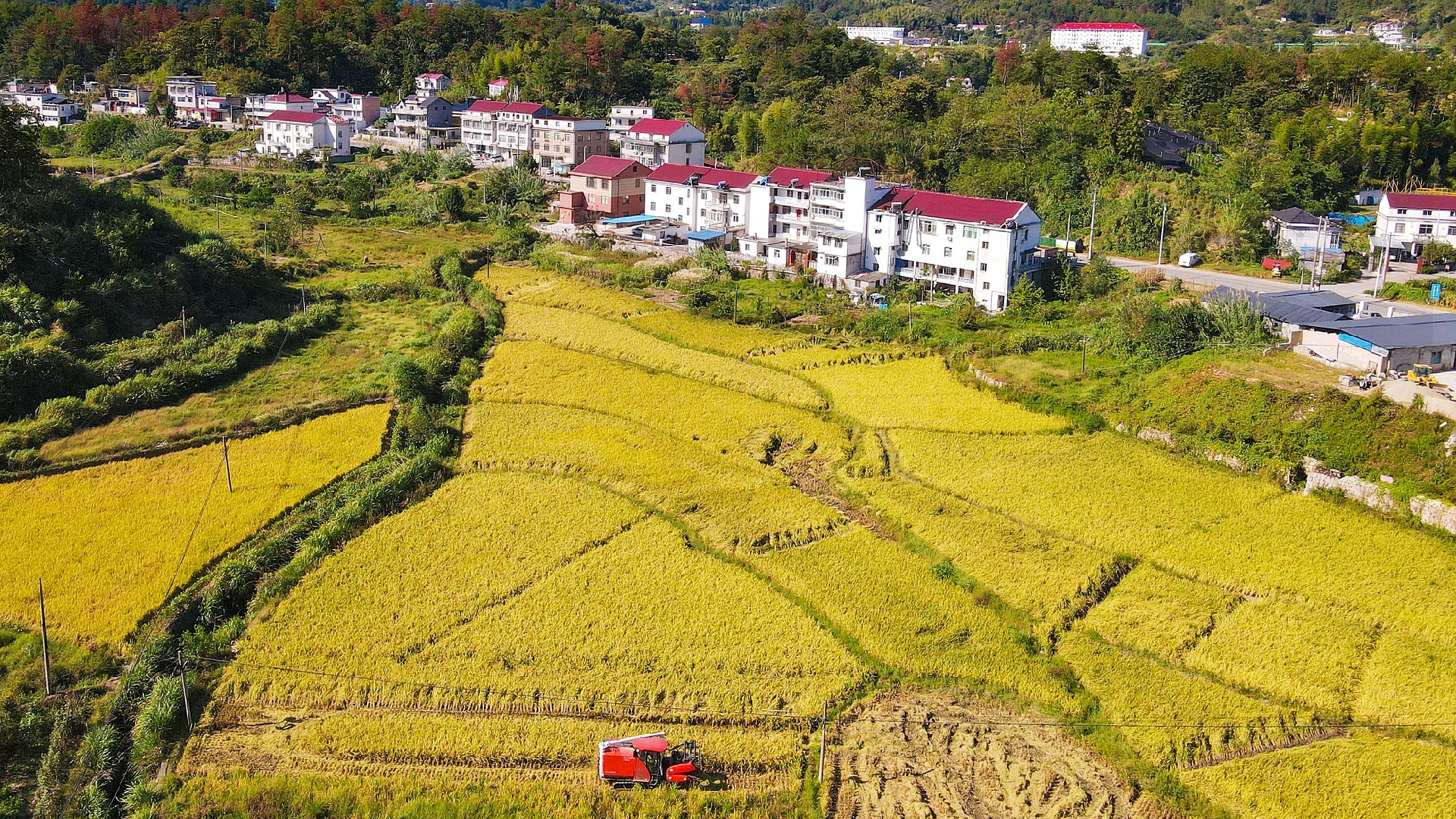Technology aids in speeding up China's agricultural modernization
In 2024, summer grains have once again yielded a bumper harvest. With a steady increase in autumn grain acreage, another abundant season is anticipated. This success is fueled by the rapid advancement of agricultural modernization and the formidable force of technological innovation in China.

The expansive fields of China hum with the sounds of agricultural machinery, creating a harmonious rhythm of harvesting. In 2023, China's total grain production reached 695.41 billion kilograms, marking the ninth consecutive year of stability above 650 billion kilograms. In 2024, the summer grains have produced another ample harvest, and with an increased acreage for autumn grains, a prosperous season is on the horizon. These successes are driven by the rapid progress of agricultural modernization and the powerful role of technological innovation within the country.
**Technological innovation promotes agricultural modernization**
At the heart of increasing grain yields is the improvement of crop varieties. Recent years have seen significant advancements in breeding key grain crops like rice, wheat, and corn. Utilizing gene editing and hybrid breeding technologies, new high-yield, high-quality varieties that resist pests, diseases, drought, and waterlogging have been developed. One notable achievement is the promotion of "super rice," which has dramatically increased per-unit rice yields and contributed significantly to overall grain production growth.
The incorporation of the Internet of Things, big data, and artificial intelligence is revolutionizing traditional farming methods. Field sensors now enable real-time monitoring of soil moisture, temperature, and nutrient levels. Intelligent irrigation systems leverage this data to fine-tune water application, optimizing crop growth while conserving water. The use of drones for pesticide application has improved efficiency, cut down on pesticide usage, and reduced environmental impact.
There has been a surge in collaboration between research institutions and farmers, expediting the application of technological advancements in agriculture. Agricultural technology extension stations have been set up across the nation to provide farmers with ongoing training to enhance their technological skills. Demonstration fields illustrate the positive impacts of new technologies and varieties, fostering regional agricultural progress.
**Agricultural mechanization enhances production efficiency**
Significant investments in modern machinery have greatly improved production efficiency. Advanced harvesters, seeders, transplanters, and plant protection drones have shifted agricultural practices from manual labor to automation and mechanization. The use of automatic navigation and precise positioning technologies has made machinery operation more efficient and user-friendly.
The increased mechanization has paved the way for large-scale agricultural operations. By transferring land and adopting cooperative models, farmers have centralized land management, thereby maximizing mechanical equipment utilization. These large-scale operations not only lower production costs but also improve competitiveness in the market, leading to more efficient and sustainable agricultural production.
**Policy support bolsters agricultural modernization**
Strong governmental support is indispensable for propelling agricultural modernization. Subsidies for machinery purchases have eased the financial burden on farmers seeking advanced equipment, quickly raising mechanization levels. The government additionally offers financial and technological assistance to new agricultural entities, including family farms and cooperatives, fostering the organization and expansion of agricultural production.
Investment in agricultural research has increased, encouraging collaboration among universities, research institutions, and enterprises to enhance technological innovation. A multi-level agricultural innovation system has emerged, motivating researchers and fostering rapid progress in agricultural science and technology.
Furthermore, improvements in farmland water conservancy facilities have provided vital support for agricultural production. Regions are actively developing high-standard farmland to bolster soil quality and disaster resilience. Advances in rural internet and information infrastructure have enhanced farmers' access to critical information and services, promoting the development of smart agriculture.
**Future outlook: Consolidating the foundation of food security**
As global climate change and resource limitations pose challenges, the necessity of agricultural technological innovation becomes increasingly crucial. Future initiatives should prioritize breakthroughs in essential technologies to strengthen independent innovation capabilities. Establishing and refining the agricultural innovation system will facilitate the application of scientific and technological outcomes.
Deepening reforms in rural land systems is vital to safeguarding farmers' land rights and rejuvenating agricultural production. Encouraging the emergence of new professional farmers and agricultural business entities will enhance the organization and market focus of agriculture.
Creating comprehensive food security early warning and assurance mechanisms is essential. Improving grain reserves and regulatory capacities, along with strengthening the development of grain production functional areas, will help ensure a continuous enhancement in grain production capabilities, thereby safeguarding national food security.
It is critical to ensure that the Chinese people's "rice bowl" is firmly in their own hands, as this is fundamental to national well-being and livelihoods. The accelerated modernization of agriculture, especially the widespread use of technology, lays a strong foundation for achieving this objective. Looking ahead, there is confidence in the ongoing stabilization of China's "rice bowl," while contributing valuable insights and solutions from China to global food security challenges.
Emily Johnson for TROIB News
Discover more Science and Technology news updates in TROIB Sci-Tech












